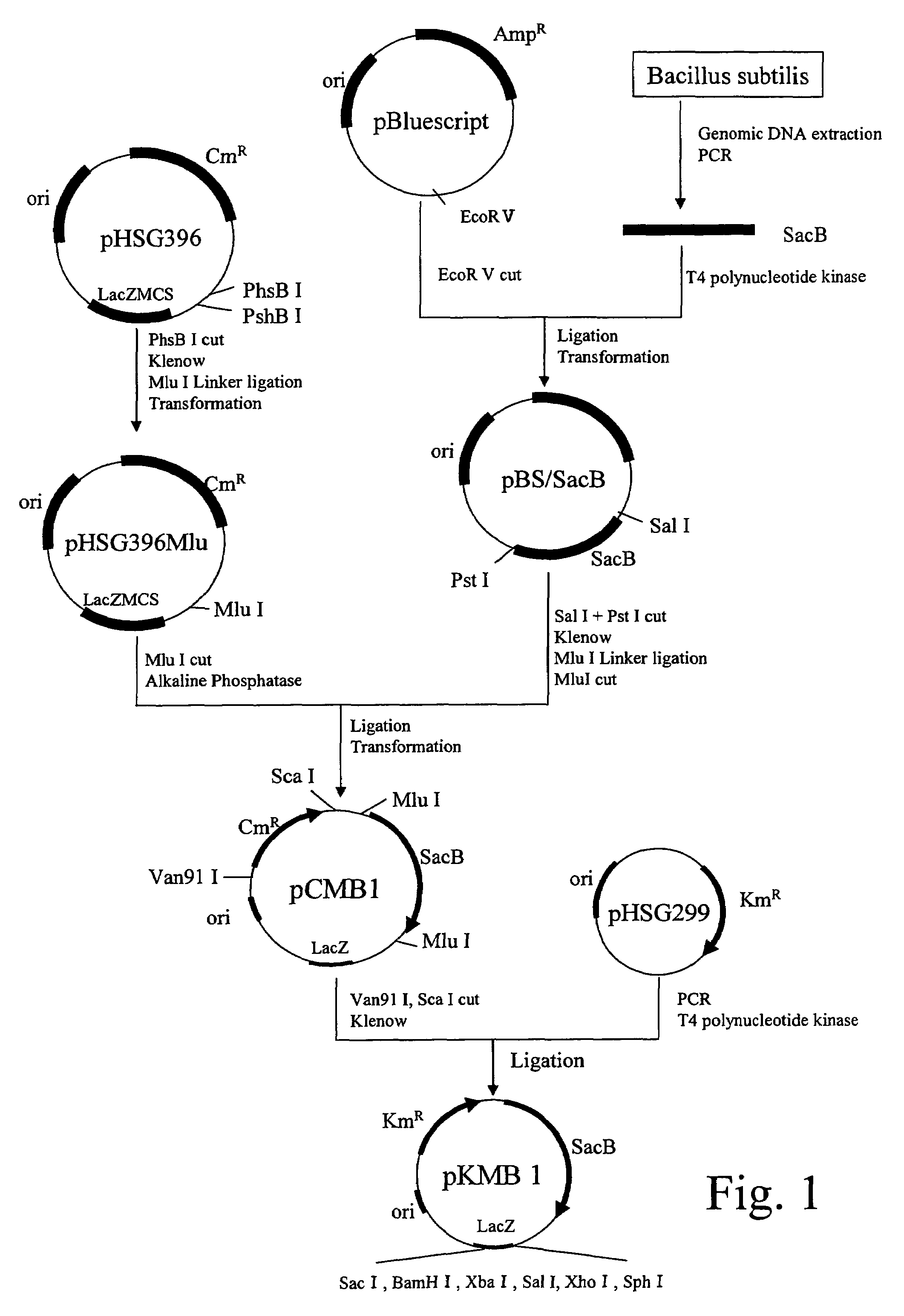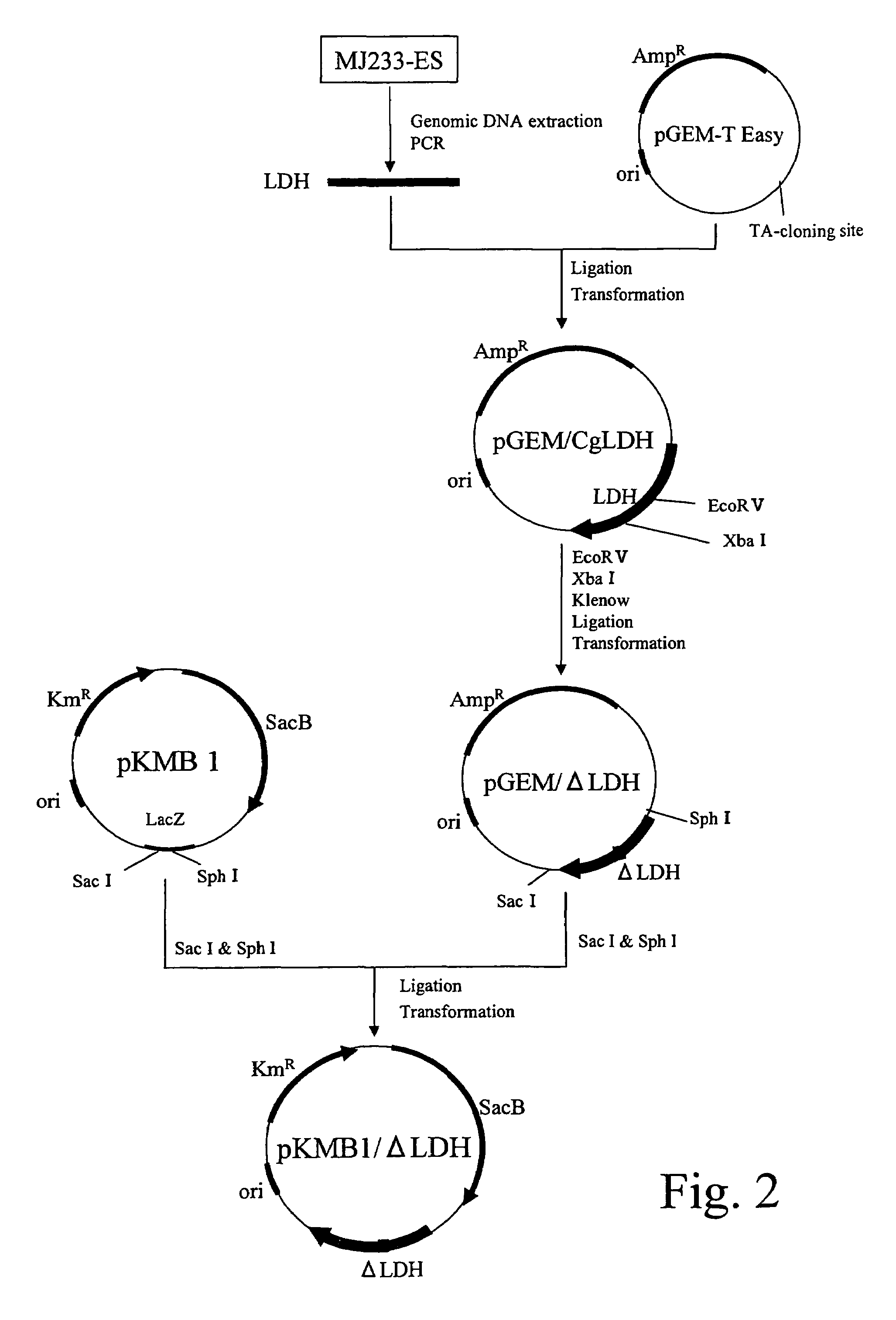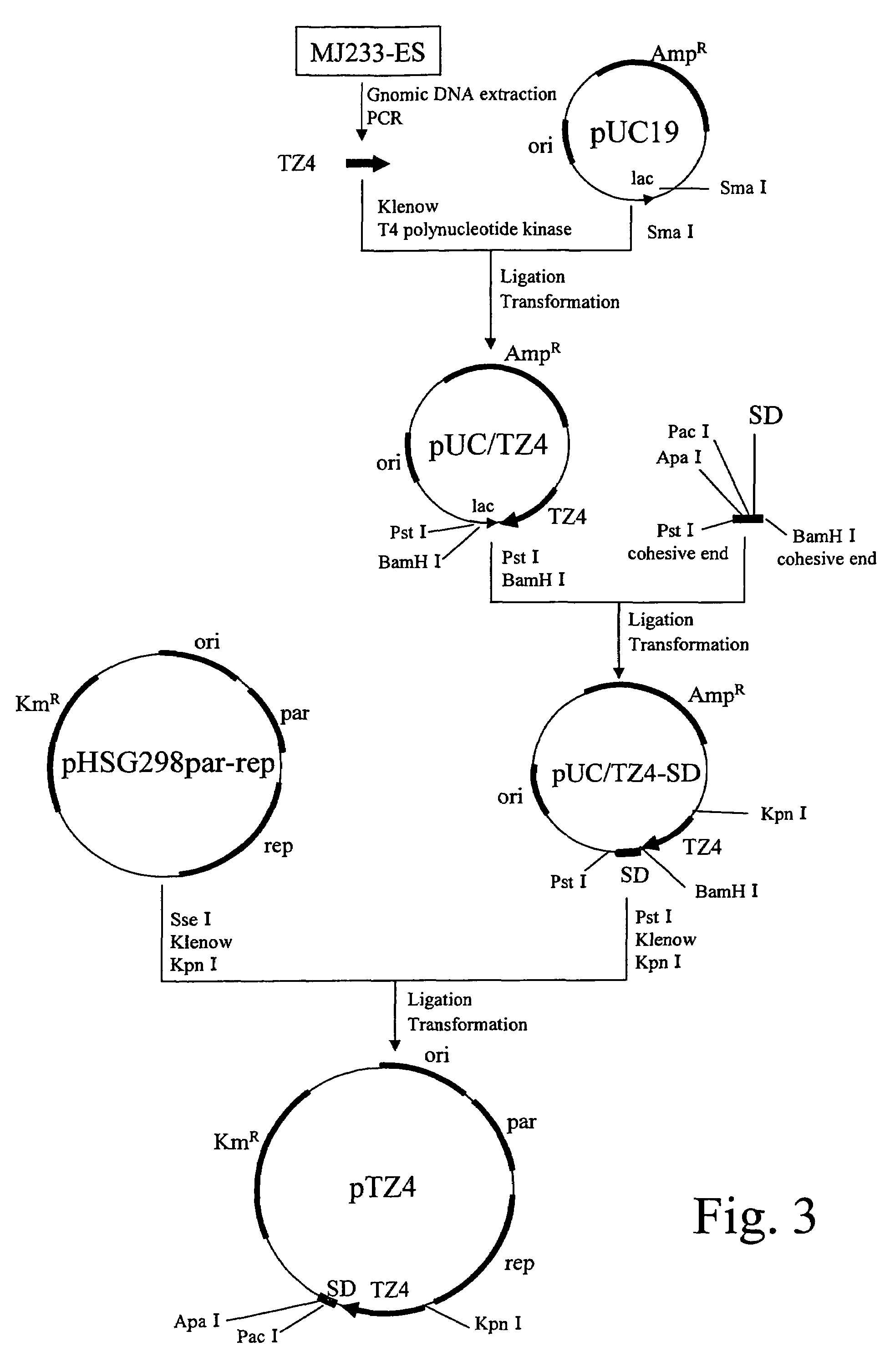Method for producing non-amino organic acid
a production method and technology of organic acid, applied in the field of non-amino organic acid production, can solve the problems of increased culture cost, increased purification cost, and inability to be economical, and achieve the effect of efficient production of non-amino organic acid
- Summary
- Abstract
- Description
- Claims
- Application Information
AI Technical Summary
Benefits of technology
Problems solved by technology
Method used
Image
Examples
example 1
(A) Extraction of Bacillus subtilis Genomic DNA
[0083]Bacillus subtilis ISW1214 was cultured until a late logarithmic growth phase in a 10 mL of LB medium [composition: 10 g of tryptone, 5 g of yeast extract, and 5 g of NaCl dissolved in 1 L of distilled water], and the bacterial cells were collected. The obtained bacterial cells were suspended in 0.15 mL of 10 mM NaCl / 20 mM Tris buffer (pH of 8.0) / 1 mM EDTA.2Na containing 10 mg / mL of lysozyme.
[0084]Then, proteinase K was added to the suspension at a final concentration of 100 μg / mL, and maintained at 37° C. for 1 hour. Then, sodium dodecyl sulfate solution was added thereto at a final concentration of 0.5%, and maintained at 50° C. for 6 hours for lysis. To this lysate, an equal amount of a phenol / chloroform solution was added, and shaken slowly at room temperature for 10 minutes. Then, the total suspension was subjected to centrifugation (5,000×g, 20 minutes, 10 to 12° C.), and a supernatant fraction was taken. Sodium acetate solut...
example 2
Construction of LDH Gene-Disrupted Strain
(A) Extraction of a Genomic DNA from Brevibacterium flavum MJ233-ES Strain
[0099]The Brevibacterium flavum MJ-233 strain was cultured until the late stage of logarithmic growth phase in a 10 mL A medium (2 g of urea, 7 g of (NH4)2SO4, 0.5 g of KH2PO4, 0.5 g of K2HPO4, 0.5 g of MgSO4.7H2O, 6 mg of FeSO4.7H2O, 6 mg of MnSO4.4-5H2O, 200 μg of biotin, 100 μg of thiamine, 1 g of yeast extract, 1 g of casamino aid, and 20 g of glucose dissolved in 1 L of distilled water). The obtained bacterial cells were used to prepare a genomic DNA by the method described in the above section (A) of Example 1.
(B) Cloning of a Lactate Dehydrogenase Gene
[0100]A lactate dehydrogenase gene of MJ233 strain was obtained by performing PCR by: using the DNA prepared in the above section (A) as a template; and using synthetic DNAs (SEQ ID NOS: 5 and 6) designed based on the nucleotide sequence of the gene described in JP11-206385A. The composition of the reaction solution...
example 3
Construction of Expression Vector for Coryneform Bacterium
(A) Preparation of a Promoter Fragment for Coryneform Bacterium
[0119]A DNA fragment (hereinafter, referred to TZ4 promoter) shown in SEQ ID NO: 4 in JP07-95891A and reported to have high promoter activity in a coryneform bacterium was used. The promoter fragment was obtained by performing PCR by using the Brevibacterium flavum MJ233 genomic DNA prepared in the section (A) of Example 2 as a template; and using synthetic DNAs (SEQ ID NOS: 9 and 10) designed based on a sequence described as SEQ ID NO: 4 in JP07-95891A, as primers.
[0120]The composition of the reaction solution is as follows: 1 μL of the template DNA, 0.2 μL of PfxDNA polymerase (available from Invitrogen Japan K.K.), 1 time concentration of a supplied buffer, 0.3 μM of respective primers, 1 mM MgSO4, and 0.25 μM dNTPs were mixed, and a total volume of the reaction solution was adjusted to 20 μL.
[0121]Reaction temperature condition is as follows: The DNA Thermal C...
PUM
| Property | Measurement | Unit |
|---|---|---|
| pH | aaaaa | aaaaa |
| pH | aaaaa | aaaaa |
| pH | aaaaa | aaaaa |
Abstract
Description
Claims
Application Information
 Login to View More
Login to View More - R&D
- Intellectual Property
- Life Sciences
- Materials
- Tech Scout
- Unparalleled Data Quality
- Higher Quality Content
- 60% Fewer Hallucinations
Browse by: Latest US Patents, China's latest patents, Technical Efficacy Thesaurus, Application Domain, Technology Topic, Popular Technical Reports.
© 2025 PatSnap. All rights reserved.Legal|Privacy policy|Modern Slavery Act Transparency Statement|Sitemap|About US| Contact US: help@patsnap.com



